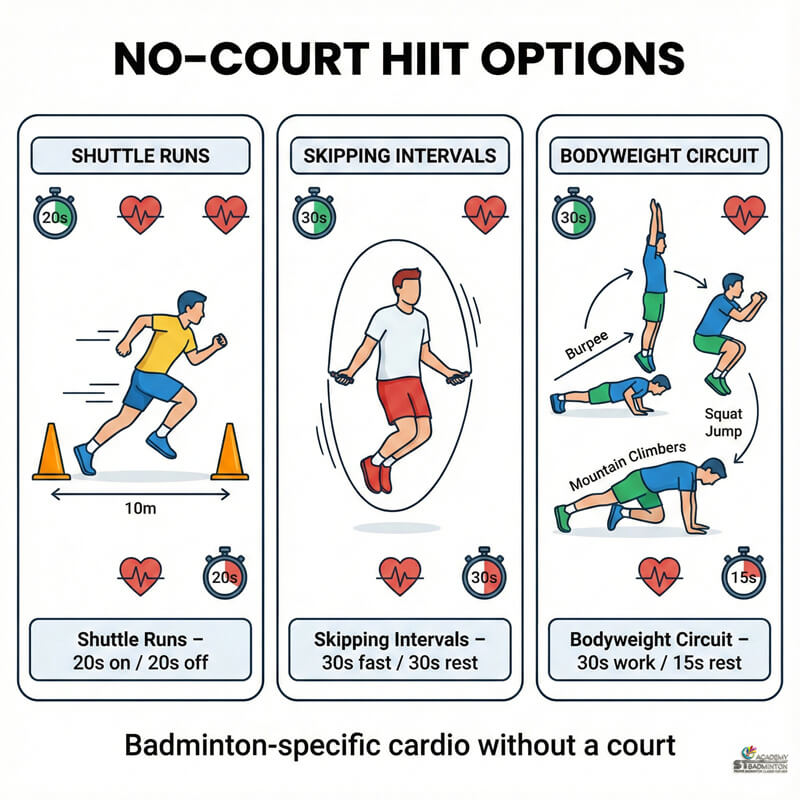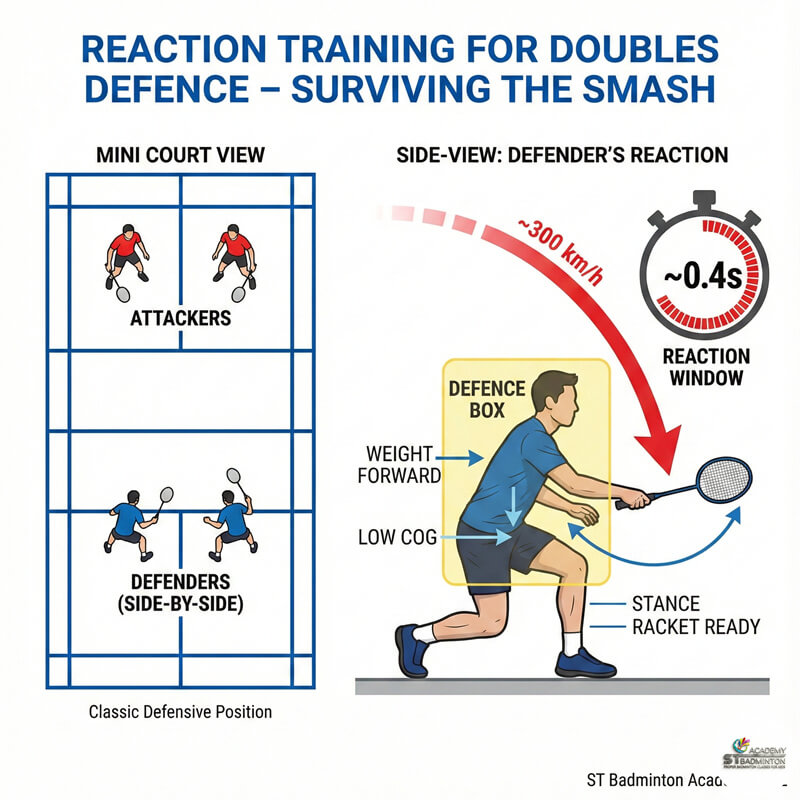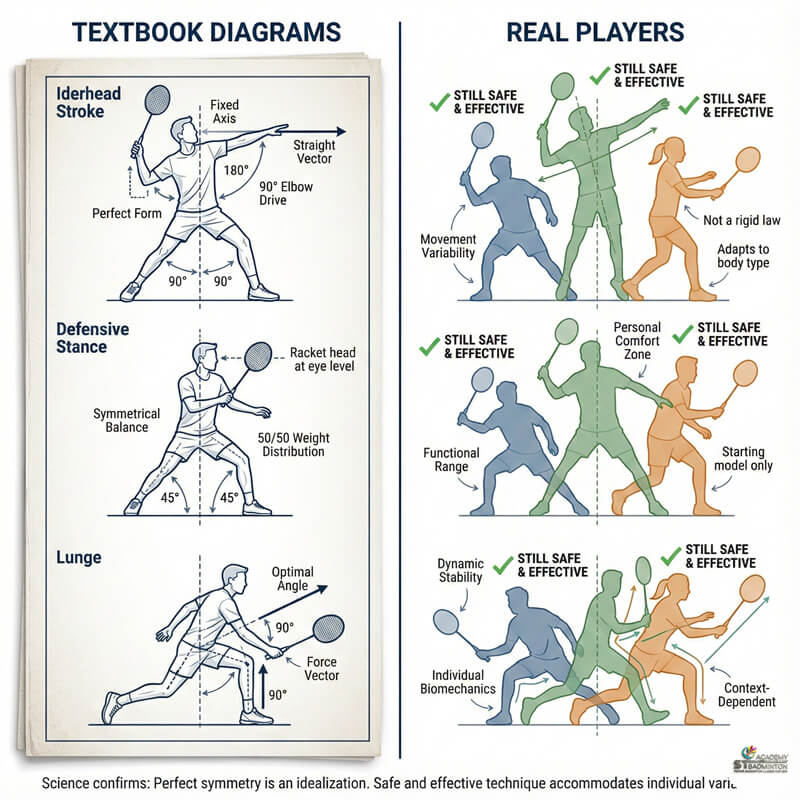10 Effective Badminton Coaching Techniques (Malaysia Guide)
This guide is for parents, beginner coaches, and serious players in Malaysia who want to understand effective badminton coaching techniques. Here, you will get a coach’s breakdown of 10 practical coaching techniques that actually work on court. The main focus is on foundation first coaching, correct footwork, meaningful feedback, structured drills, and simple match analysis. Using these techniques consistently can help kids and players in Kuala Lumpur improve faster and more safely, but there is no instant miracle steady progress is the real goal.
A badminton coach in Malaysia explains 10 practical coaching techniques to help players in Kuala Lumpur build strong skills, footwork, and game understanding.
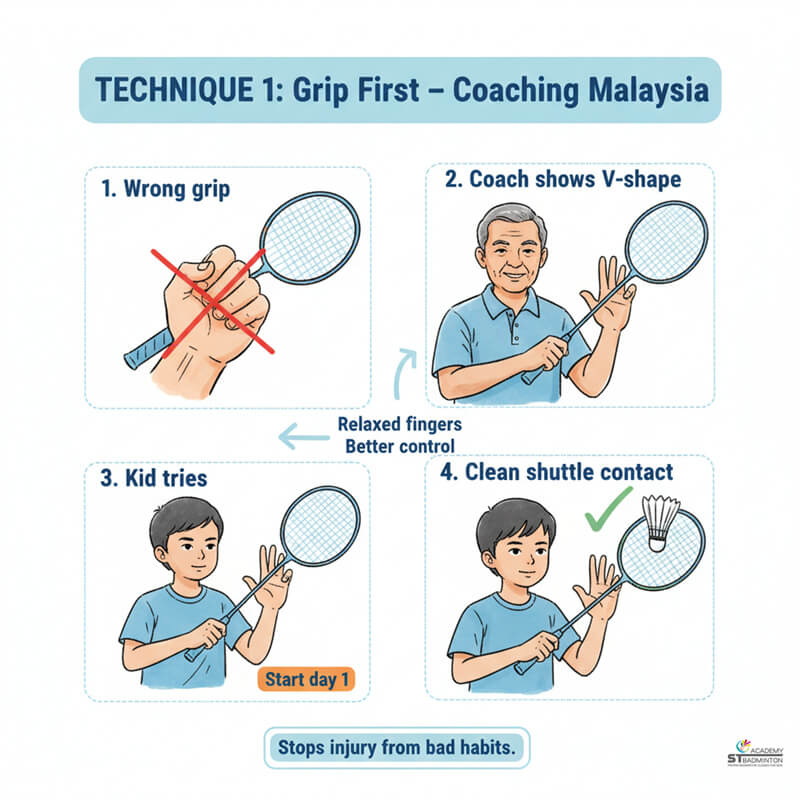
Technique 1
Start With Proper Grip And Basic Racket Skills
One of the most important badminton coaching techniques is to build a strong foundation from the very first day. A good coach will always start a new player, especially a child, with the correct grip. Holding the racket properly is the key to control, power, and injury prevention. Before even thinking about smashing, players must learn how to make simple, clean contact with the shuttle, often starting with basic hitting in the net area to build confidence.
This ‘foundation first’ approach stops bad habits from forming. In many social groups around Kuala Lumpur and Petaling Jaya, players often develop incorrect grips that limit their progress later on. Effective badminton coaching slows down at the start to ensure these basics are correct. When parents search for the “best badminton coach Malaysia,” they are often looking for a coach who understands this principle: fix the foundation first, so the rest of the game can be built safely and effectively upon it.
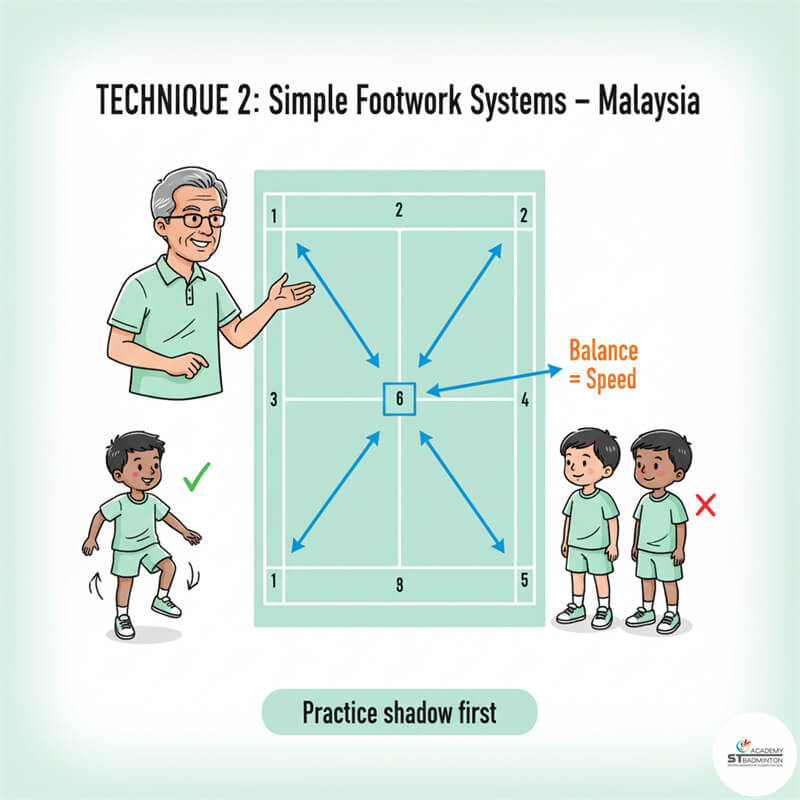
Technique 2
Teach Simple, Clear Footwork Systems Early
A player can have a great swing, but if they cannot reach the shuttle on time, the swing is useless. That is why strong badminton coaching techniques place footwork and court movement on the same level as racket skills. From the beginning, coaches should teach simple and repeatable footwork patterns for moving to the six corners of the court.
This starts with learning the ready position and split step. Then, coaches introduce basic patterns like front and back and side to side movements. Shadow footwork, where players move without a shuttle, is a powerful tool to build muscle memory. Consistent badminton footwork coaching helps players cover the court efficiently, stay balanced, and reduce the risk of injuries. For kids in after school programmes in Wangsa Maju or Cheras, making these movements a habit early on is key to their long term development.
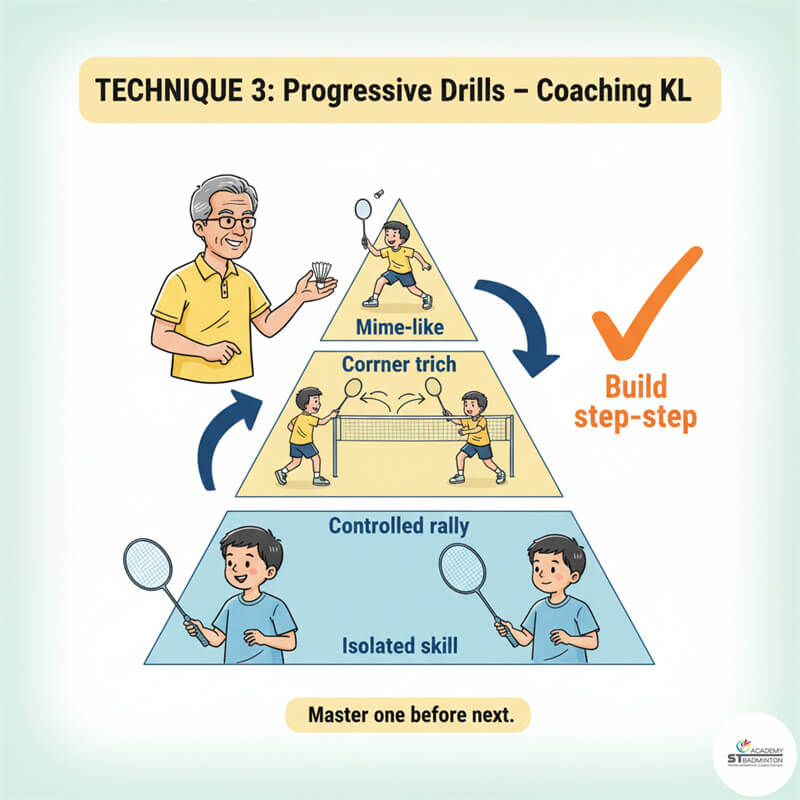
Technique 3
Use Progressive Drills: Isolated Skill → Controlled → Game Like
Simply hitting shuttles back and forth is not a coaching method. Effective badminton coaching techniques use a clear, progressive structure to teach new skills. This usually follows three steps. First, the coach explains and demonstrates the skill (e.g., a net shot). Second, the player practices it in an isolated, controlled way, such as with a simple hand feed from the coach. This allows them to focus purely on the technique without other distractions.
Once the player shows basic consistency, the drill progresses to a more realistic rally or game like situation. For the net shot, this might mean the coach feeds a drop shot, and the player has to move forward with correct footwork to play the net shot back. This method ensures that every skill is learned with a clear link to how it will be used in a real match. These badminton drill ideas for coaches ensure that training time is purposeful and builds skills step by step.
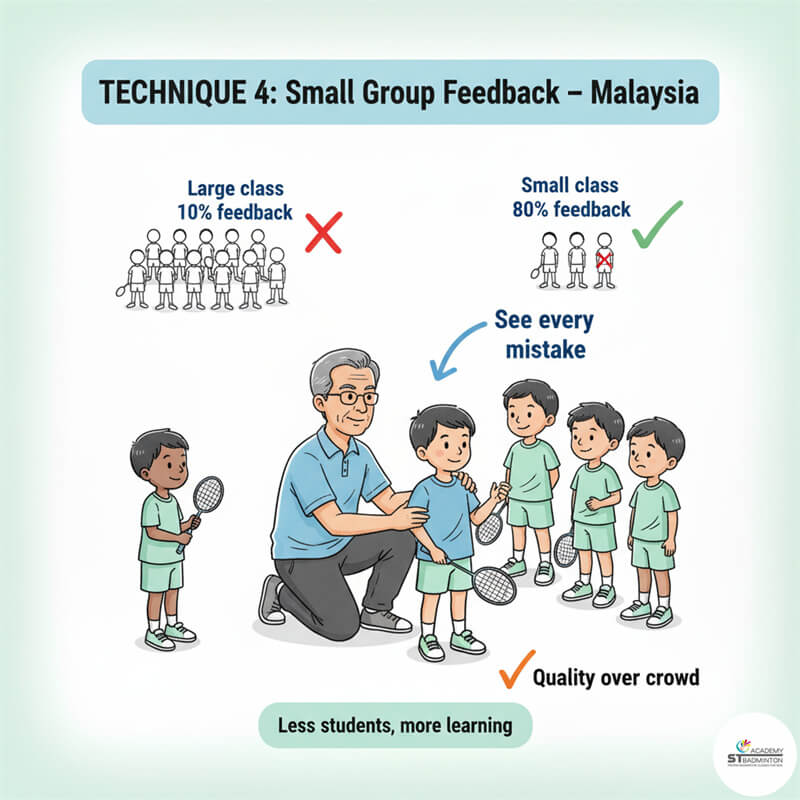
Technique 4
Small Group Coaching And Individual Corrections
One of the keys to effective badminton coaching in Malaysia is managing the group size. In a large class of 10 or more players, it is almost impossible for a coach to see every player’s mistakes. Small group badminton coaching, typically with 4 to 6 players per coach, allows for personalised attention. The coach can see each player’s technique clearly, provide immediate individual corrections, and adjust drills to match different skill levels within the group.
This ensures that no player gets left behind and bad habits are corrected before they become permanent. Many parents in Kuala Lumpur specifically look for small group training because they notice their children learn faster and build more confidence. A badminton coach in Kuala Lumpur who keeps groups small is showing a commitment to quality over quantity, which is a sign of a strong coaching method.
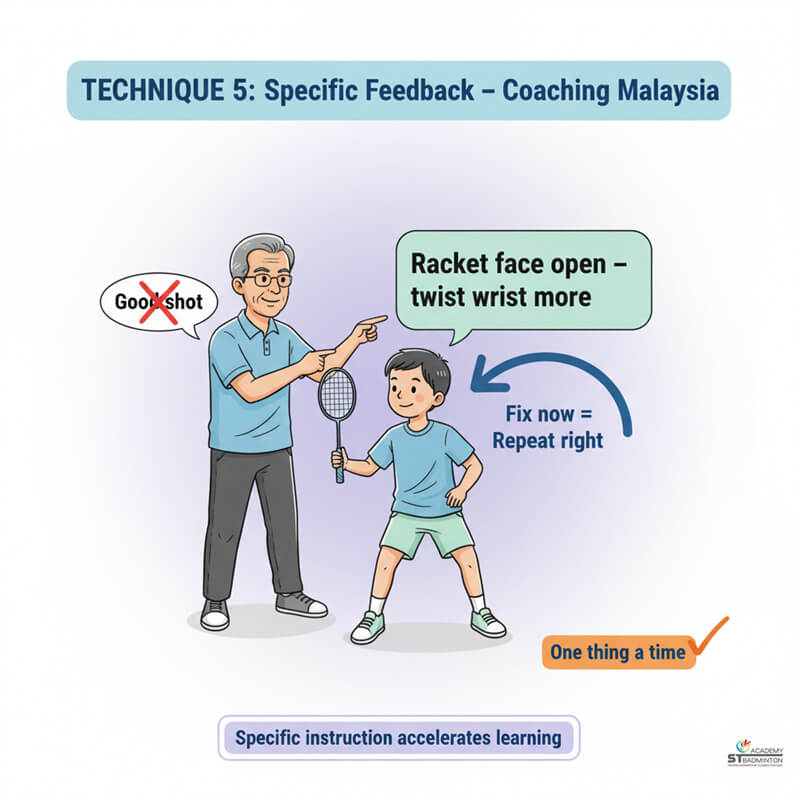
Technique 5
Immediate, Specific Feedback (Not Just ‘Good Shot’)
Modern coaching science shows that the type of feedback a coach gives is extremely important. Vague comments like “good try” or “nice shot” are encouraging but do not help a player understand what to fix. An effective badminton coaching technique is to provide immediate and specific feedback that is tied to a single, clear action.
For example, instead of “good smash,” a coach might say, “That was a good smash because your grip was relaxed on impact.” Or, instead of “move faster,” they might say, “You used the correct first step with your racket foot on that lunge.” This type of feedback gives the player a clear mental picture of what they did right, making it easier to repeat. One of the best badminton coaching tips is to connect every piece of feedback to one simple improvement at a time, so the player is not overwhelmed.
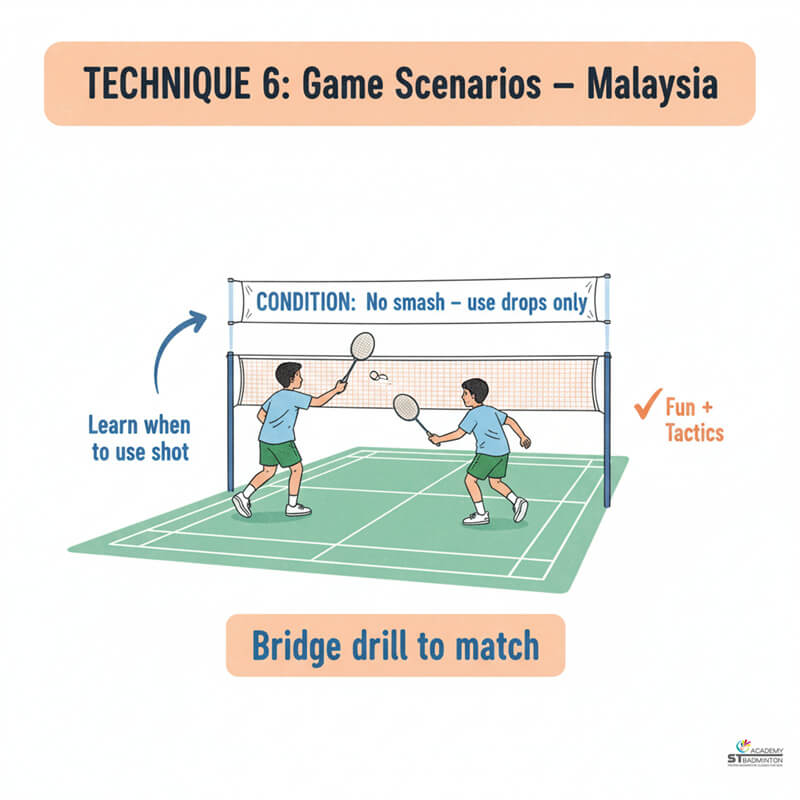
Technique 6
Use Game Based and Scenario Training
Badminton is not just about hitting shots; it is about making decisions. Effective badminton tactical coaching uses small games and scenarios to teach players how to think on court. This is far more engaging than just doing repetitive drills for an entire session. A coach can create simple game conditions, such as playing points using only the back half of the court to improve clears and drops, or a 2 versus 1 defensive drill to sharpen reflexes.
These game based drills help players learn shot selection, positioning, and strategy in a fun and competitive way. For kids badminton coaching techniques, this is especially important. Mini games keep young players in places like Setapak and Taman Maluri engaged while they learn important tactical lessons. This method bridges the gap between simply learning a technique and knowing when and how to use it in a match.
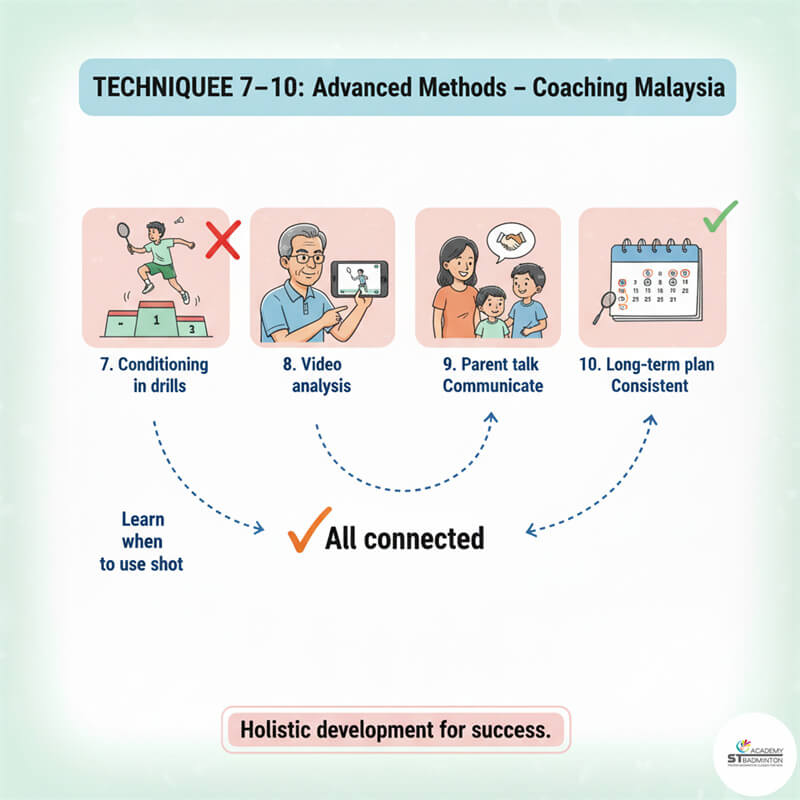
Techniques 7, 8, 9 & 10
Advanced Badminton Coaching Methods
Beyond the basics, effective coaching integrates several other key areas.
(7) Structured Conditioning is blended into drills – not just random running, but multi-shuttle feeds and agility ladders that mimic game movements.
(8) Match and Video Analysis is another modern technique – even simple discussions about rally patterns help players build game intelligence.
(9) Clear Communication with both players and parents is crucial. A good coach in Malaysia explains training goals and helps parents in places like Kepong and Selayang understand their child’s progress realistically. Finally,
(10) Planning and Consistency are vital. The best badminton coaching techniques are part of a long-term plan, and no coach can help if training is not consistent.
FAQs About Badminton Coaching Techniques
Common questions from parents and players in Kuala Lumpur about effective badminton coaching methods.
What are the most important badminton coaching techniques for young beginners?
For young beginners, the focus should always be on the fundamentals. The most crucial kids badminton coaching techniques are teaching the correct grip, establishing a balanced ready stance, and introducing basic footwork patterns. It is also vital to make learning fun through game based drills. This approach builds a strong foundation, prevents bad habits, and keeps children motivated. In our classes for kids in Kuala Lumpur, we prioritise making the first experience with badminton positive and technically sound.
How many students per class is ideal for effective coaching?
For effective badminton coaching, a small group size is essential. An ideal ratio is between 4 to 6 students per coach. This allows the coach to provide each player with individual attention and specific feedback. In a large class, it is easy for mistakes in grip or footwork to go unnoticed. A smaller group ensures that the coach can tailor drills to different skill levels and correct bad habits early. This is a key part of our badminton coaching methods in Malaysia to ensure quality learning.
How long until kids in Kuala Lumpur see improvement from structured coaching?
With consistent training (1-2 times per week), most children in Kuala Lumpur will show noticeable improvement in basic skills within 4 to 8 weeks. They might hold the racket better, move their feet more deliberately, and hit the shuttle more cleanly. However, mastering badminton takes years. The goal of effective badminton coaching is steady, long term development, not immediate results. Parents should focus on their child’s effort and enjoyment rather than just winning or losing, especially in the early stages.
Do these 10 coaching techniques apply to adult social players?
Yes, absolutely. These 10 effective badminton coaching techniques are universal principles that apply to players of all ages and levels, including adult social players in Setapak or Shah Alam. While adults may have different goals, the importance of a solid foundation, efficient footwork, specific feedback, and structured practice remains the same. Many adult players hit a skill plateau because of long standing bad habits. A good coach can help identify and correct these issues using these proven methods.
Can online videos replace a real badminton coach in Malaysia?
Online videos are a fantastic resource for learning about badminton theory and seeing professional techniques. However, they cannot replace a real life badminton coach in Malaysia. A video cannot see your specific mistakes or provide personalised feedback on your grip, footwork, or swing. The biggest value of a coach is their ability to observe, diagnose, and correct individual issues on the spot. It is best to use online videos as a supplement to, not a replacement for, in person coaching.
How should parents support their child’s badminton training at home?
Parental support is vital. The best way to help is to ensure the child attends training sessions consistently and on time. After class, focus on praising their effort and positive attitude rather than asking “did you win?”. Trust the coach’s process and maintain open communication about the child’s progress or any concerns. At home, you can encourage simple physical activities like skipping or shadow footwork, but avoid trying to “coach” them yourself unless you are aligned with the main coach’s methods.
Badminton Coaching Techniques in Action
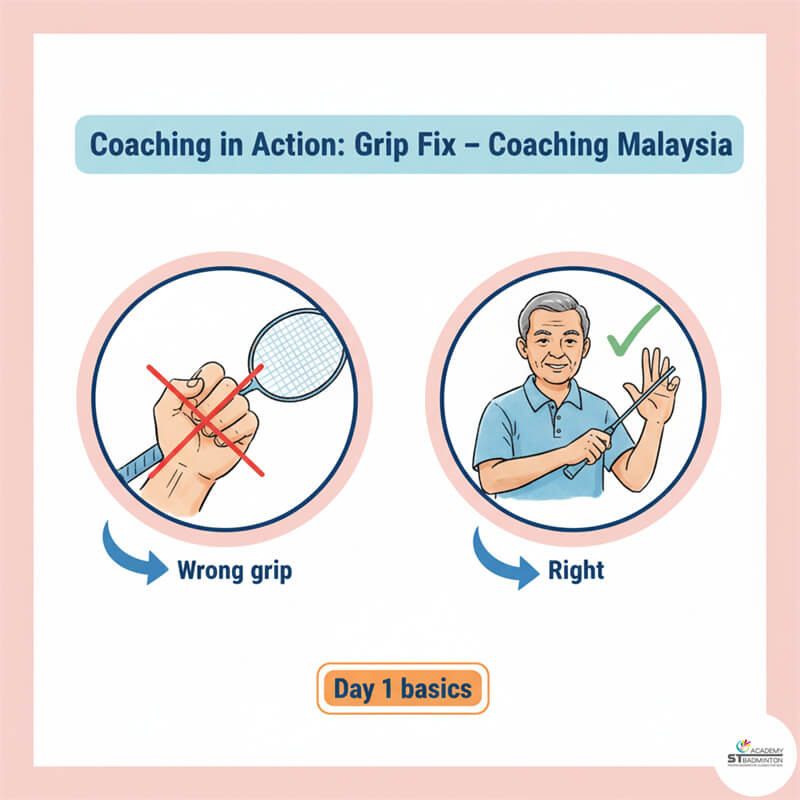
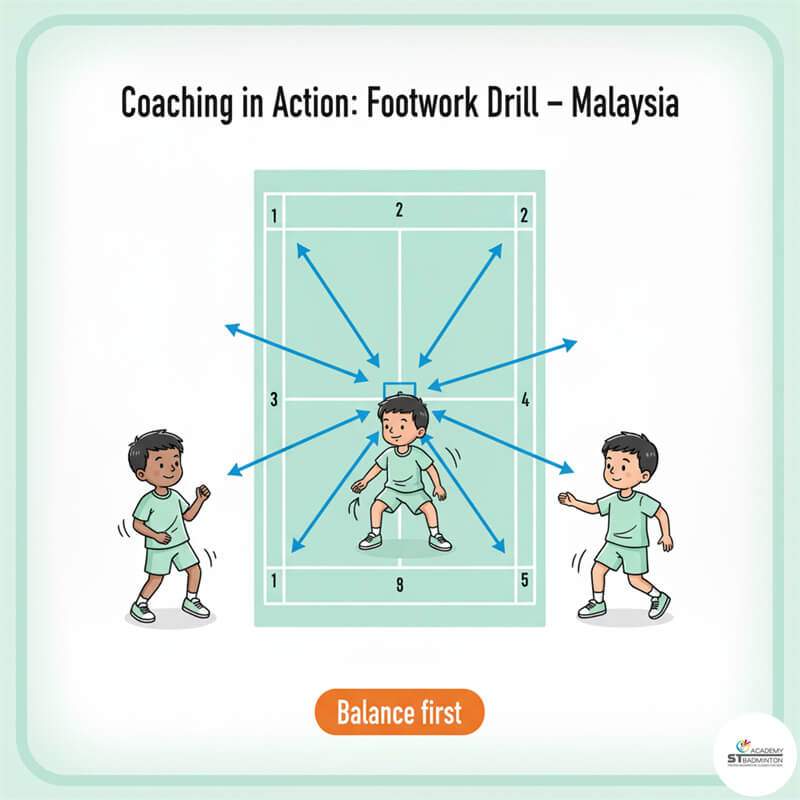
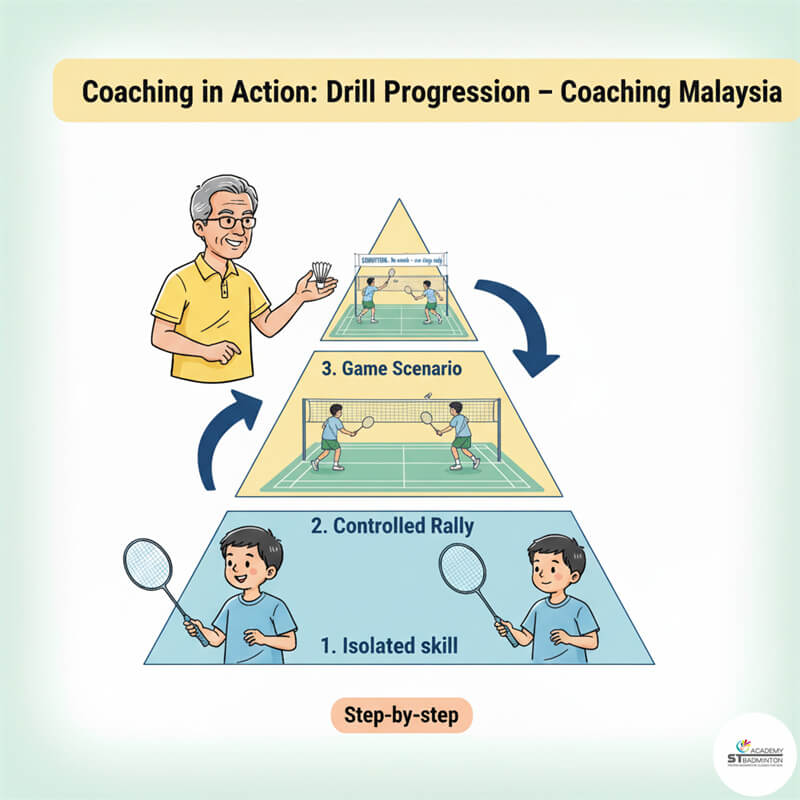

Benefits of Effective Coaching Techniques
Starting with structured badminton coaching techniques gives players a significant advantage in skill development, confidence, and overall court understanding. Our professional approach ensures they build a solid foundation for a lifelong love of badminton.
| Coaching Element | Unstructured Training | Our Structured Coaching EFFECTIVE |
|---|---|---|
| Foundation Skills | Random hitting develops bad habits with grip and swing that are hard to fix later. | Builds correct muscle memory for grip and basic strokes from the very first lesson. |
| Footwork | Inefficient movement, often flat-footed, which leads to being slow and getting tired quickly. | Teaches systematic footwork patterns to ensure balanced and efficient court coverage. |
| Drill Progression | Players just hit shuttles back and forth without a clear purpose or skill-building goal. | Uses progressive drills (isolated skill → controlled rally) to build skills step-by-step. |
| Coach Feedback | General comments like "good shot" in large groups with little individual attention. | Provides immediate, specific corrections in small groups (4-6 players) to fix errors. |
| Tactical Skills | Players learn technique but not the decision-making of when to use each shot in a match. | Uses game-based scenarios to develop tactical thinking and shot selection skills. |
| Long-Term Plan | Players often hit a skill ceiling because there is no clear plan for their improvement. | Follows a long-term development plan, from fundamentals to advanced tactics. |
| Parent Communication | Little to no feedback on player progress, leaving parents unsure of their child's development. | Maintains clear communication with parents on training goals and realistic progress. |
Ready for In Person Badminton Training in Kuala Lumpur?
This guide explains the badminton coaching techniques needed for real improvement. When you are ready to apply this knowledge with professional feedback, our academy is here to guide you. We provide in person badminton training in Malaysia; we do not offer online classes. Our programme uses structured, small group coaching designed for serious learners, not a casual session. Contact a professional badminton coach in Kuala Lumpur to learn about class schedules for kids and adults in Setapak, Wangsa Maju, and Cheras.

